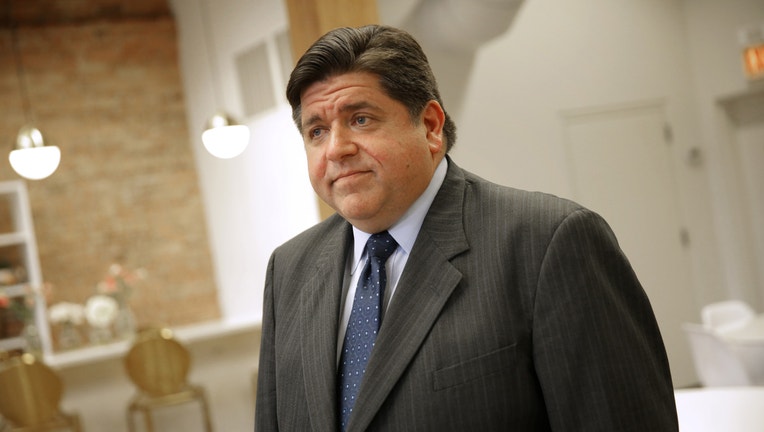Pritzker signs $43-billion Illinois budget reliant on federal grant

(E. Jason Wambsgans/Chicago Tribune/TNS via Getty Images)
SPRINGFIELD, Ill. - Gov. J.B. Pritzker signed into law Wednesday an Illinois budget heavily reliant on federal assistance because of revenue lost to COVID-19 restrictions on businesses and social interaction.
But even short of revenue, Democrats who control the General Assembly sent the Democratic governor a $42.9 billion spending plan, 7.5% larger than the current year’s outlay. It takes effect July 1.
The budget relies on billions of dollars that Illinois and other states hope come in the form of federal assistance to state balance sheets battered by COVID-19. It also authorizes borrowing up to $5 billion from a federal COVID-19 relief fund if grant funding isn’t forthcoming.
Republicans objected to the plan during an abbreviated, four-day emergency session in May that stood for a full spring session’s worth of work. They wanted spending cuts, but Democrats said balancing the budget with cuts would be too drastic.
“The COVID-19 pandemic highlighted the enormous role government plays in keeping communities safe and providing the tools people need to build better lives,” Pritzker said in a prepared statement Wednesday. “While the pandemic has had a devastating impact on our state revenues, investing in our people will allow the state to rebound and recover from this pandemic as we safely re-open.”
The highly contagious, potentially lethal coronavirus, which through Wednesday had infected nearly 130,000 in Illinois and led to the deaths of 6,095, forced Pritzker in mid-March to close schools, nonessential businesses and order people to stay at home, decrees that remained virtually unchanged through May 30. Retail sales dipped nearly 6% in March and more than 21% in April, according to the General Assembly’s bipartisan Commission on Government Forecasting and Accountability.
Unemployment soared to 16.4% and the commission estimates personal and corporate income tax revenue will fall $1.5 billion short of what it did last year, with sales tax receipts down $121 million.
Overall, Pritzker said state revenue will be $4 billion lower than what experts predicted when the governor proposed a budget in February.
Pritzker and governors across the nation are hoping for additional relief packages from Washington to fill gaps and repay that loan. The state is still spending $3.3 billion it received for COVID-19 expenses in April, although that money is restricted to specific items, such as protective clothing, used to combat the virus.
For the first year since the vaunted change in public-school funding took effect in 2018, there is no additional money for the K-12 school funding formula to continue a 10-year phase-in of the revised formula. It provides more money to needier school districts — when there’s money to put in. However, no district will get less next year than it currently receives.
Despite the temptation to short the state’s woefully underfunded pension programs, the budget fully foots the $8.6 billion bill owed next year. The massive annual payments are part of a pledge by lawmakers to make up over the next several decades the pension accounts’ combined $140 billion deficit.

